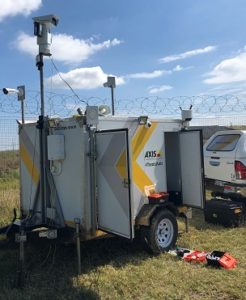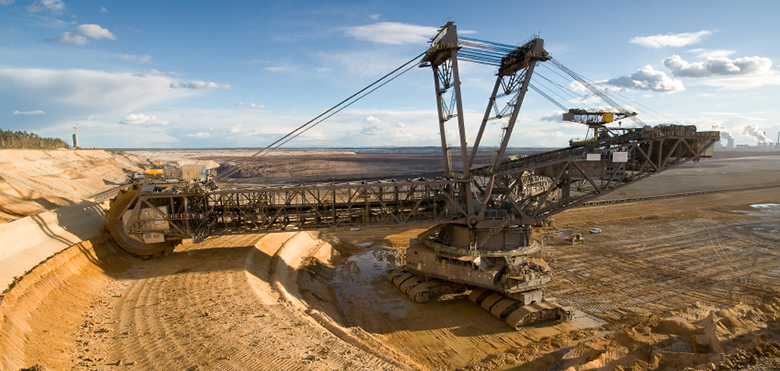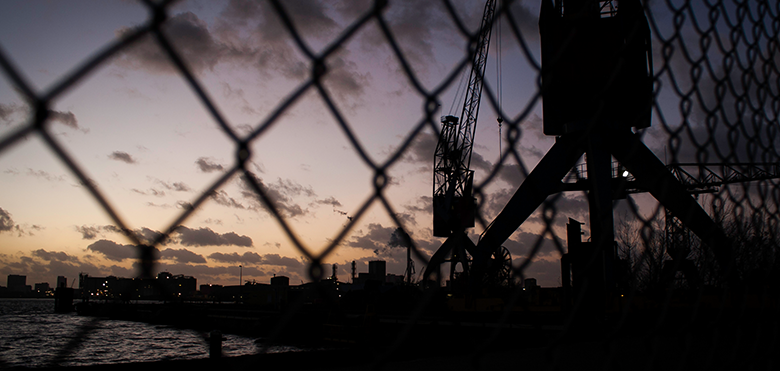Video surveillance when the mining is over
Global mining production has reached an all-time high, having nearly doubled in modern history from 9.6 billion metric tons in 1985 to 17.7 billion metric tons in 2018. And in mineral-rich South Africa, mining is an important part of the GDP employing nearly half a million people.
With a major mining sector consisting of diamonds, gold, platinum and coal, it’s easy to see why South African mining operations invest heavily in security technology to protect their workers and prevent intrusion and theft during active mining. But what happens when the mine closes?
Historically, it was common practice to simply abandon the mines when resource extraction was no longer profitable. According to a report from the Auditor General, South Africa alone has an estimated 6,000 abandoned mines – which is a relatively small number in comparison to other major mining producing countries like the United States with approximately 500,000 abandoned mines.
But abandoned mines pose significant environmental challenges – generating large volumes of acid mine drainage, tailings, waste and other contaminants that pollute local air, soil and water sources. They also pose a personal safety risk for anyone tempted to snoop around in hopes of finding a forgotten gemstone or gold nugget lying about – risks like falling down a mine shaft, drowning in an open pit, or getting trapped in a sinkhole.
All of this has prompted much tougher regulation on post-mine closure rehabilitation, and the International Council on Mining & Metals (ICMM) has developed guidelines for responsible mind closure to help companies address the economic, environmental and social aspects of mine closures.
For many of our mining customers, these guidelines are a gold standard. Adherence to the guidelines and the adoption of progressive sustainability practices in their overall mining operations is a growing trend. It’s also a competitive differentiator for a increasing number of environmentally conscious and CSR-minded consumers. Additionally, any major mining related incident these days can result in significant financial liability as well as damage a company’s reputation for many years to come.
Securing post-mine closure rehabilitation
According to the Mining Journal’s World Risk Report 2018, mine closure has been rated among the top five operating risks in mining. So it makes sense that mining companies would continue their investment in safety and security through post-mine closure rehabilitation.
The security risks during this phase are quite similar to those in active mining – intrusion, theft, sabotage and personal safety. But the technology must be updated to match the change in post-mining focus. In many cases, this means a complete retrofit.
This is particularly true for the video surveillance system. During active mining, video surveillance systems are designed to monitor a site with a high level of activity. Cameras need to have high resolution in order to clearly identify people and vehicles – monitoring site activity and safety compliance with a high level of detail. Anti-vibration technology is needed to maintain a smooth and steady image as heavy vehicles move large volumes of rock and ore. The infrastructure more readily supports a high level of power and bandwidth consumption, and there are adequate security resources on hand to troubleshoot or re-position a camera if needed.
During the post-mine closure phase however, companies become much more dependent on technology – as manpower resources are scaled back to mere skeleton crews. Whereas previously, a high level of activity provided a natural intrusion deterrent, companies now are now increasingly reliant on thermal-based intrusion protection technology to secure vast, remote perimeters. And it’s important to stress that the quality of the video analytics must be extremely good, as false alarms in these remote areas can be costly.

With the shift in focus from monitoring resource extraction to visualizing site rehabilitation, cameras must be re-positioned and low-light, IR and WDR technology are increasingly important to ensure that a darkened mine shaft is properly filled.
Challenges with power supply, bandwidth and storage also arise as the site infrastructure is dismantled. So, it’s important to work with vendors and physical security professionals who can provide reliable surveillance in the absence of a physical network, and who offer products that minimize power and bandwidth consumption. A surveillance solution like this one not only provides the network infrastructure needed to support effective remote monitoring, its portable design makes it easy to deploy in remote and rugged terrain – and to re-locate or re-purpose the hardware to keep pace with the changing monitoring needs of the site.
The future of technology in mining
By keeping a watchful eye on post-mine closure rehabilitation, companies can avoid loss of life and costly downtime. This makes them much better positioned to fulfill their land restoration commitments to support sustainable socio-economic possibilities in post-mining communities.
As mining companies continue to explore innovative ways to increase profits, minimize environmental impact and reduce job hazards, the possibility for automation and video surveillance applications will continue to grow.
Continue reading: For related blog posts about the critical infrastructure industry, click here, or jump into:




